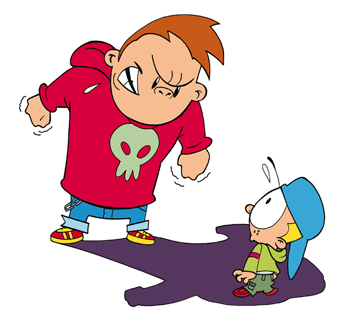When it comes to defending yourself, you need to have confidence to do it. It you act meek in a hostile situation it means one of two things: 1, you are misdirecting your opponent to catch them by surprise or (and mostly likely) you are in fact a meek minded person who is easily trampled.
Can you defend yourself with kenpo karate? Yes! ...That is if you believe that you can.
Often we compare ourselves to the greats. We watch movies with Jackie Chan and Jet Li and see how amazing they are and we immediately think that we could never perform at that level, beat all the bad guys and win the girl at the end... Well of course you can't if you don't even try!
I'm not saying that by "believing" you can, you will be able to defeat three assailants at once without any training, I'm saying that with the training that kenpo karate gives you, you can defend yourself.
First off, those tricky moves in the movies, though they are flashy without proper practice, you could not pull those off. Unless you trained like Jackie and Jet. If you believe you can do them and practice them everyday and some how magically get into such a sticky situation, then yes you could. But you don't need to. What you want is to take out your opponent in one move. Too much energy is wasted on making the stunts they do interesting. Not really practical in a real fight.
So now you understand that comparing yourself to the greats is dumb, you need to realize the power inside yourself. Training in kenpo karate develops much of the young martial artist. As a student progresses through the ranks, they get stronger, faster, more agile, longer stamina and, of course, more confidence in dealing with a life threatening situation.
The martial arts, as I've said time and time again, is not so much about building the body as it is about building the mind and spirit. As you progress, you learn timing, your reach and also you find the inner tiger within you that can stand up against anyone.
Confidence can be attained through other methods as well. However, there is no fast way to do so. It takes a lot of effort on the part of the student. But if you really want it, you can strive to find it within yourself.
If you have good self-esteem, you typically have good confidence. How you view yourself is key. If you keep comparing yourself to the greats like Chan and Li, you will always be seeking their confidence and not your own. Start with you first!
- Compliment yourself when you do something well. You don't have to do it out loud; people might stare... But take some pride in the good work you do (will talk more about this later).
- Maintain a positive attitude. This is the most played out saying in the history of the world... but it's true. No matter what, if you decide you are going to have a good day or believe that you can do anything and take down any opposition the day throws at you, you will have a great day.
- If you fail, try again. Failure is only a means of finding the way; it is not a end all situation where if you fail life ends. We often forget this. Especially teens... You can't take life too seriously or you won't be able to get over the hurdles that are constantly there. Remember that life isn't hard, it's how you use the gifts you got and kick the world's ass. DON'T LET ANYONE TELL YOU DIFFERENTLY! :)
If you're an avid reader (I'm guessing you are if you read this far) there are a lot of books that can give you more tips on building self-esteem and confidence. I'm an avid reader myself and enjoy self-improvement reads (I know not everyone is), but if you want to give these books a try, I've found them pretty useful in terms of confidence building:
As somewhat of an introvert, I found these to be pretty helpful for me. So I hope you enjoy them too. Well, thanks for reading and I will continue this series tomorrow. Till then...

